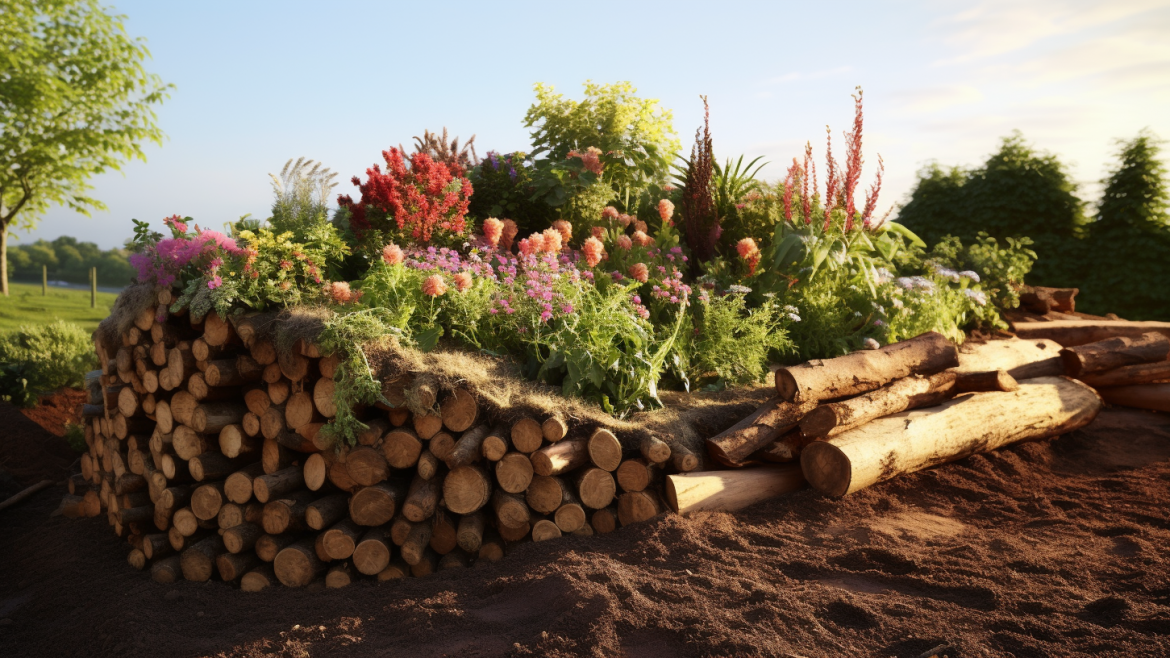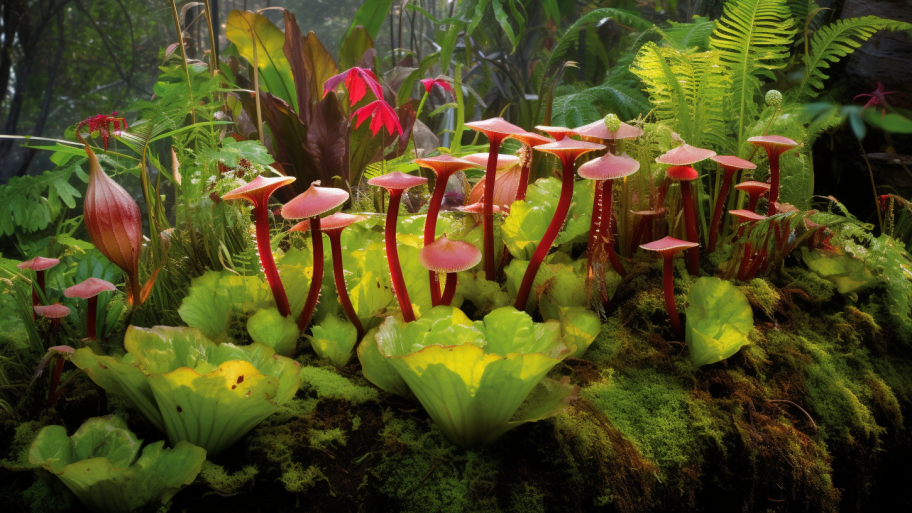Once upon a time, in the enchanting world of gardening, there was a method that revolutionized the way gardeners thought about raised beds. This method, known as Hugelkultur, has been quietly transforming gardens across the globe, offering a sustainable, low-maintenance, and highly productive alternative to conventional raised bed gardening.1 2
The Origins and Principles of Hugelkultur
Hugelkultur, a German word meaning “hill culture” or “hill mound,” has its roots in the centuries-old practices of European farmers. By using decaying wood and other organic materials, Hugelkultur creates a self-sustaining, nutrient-rich ecosystem that supports plant growth without the need for chemical fertilizers or constant watering.3 4
In essence, Hugelkultur beds are created by piling logs, branches, and other woody debris, covering them with layers of compost, soil, and other organic matter, and then planting directly on top of this mound. As the wood decays, it slowly releases nutrients and retains moisture, creating a fertile environment for plants to thrive. This process mimics what occurs naturally in a forest, where fallen trees decompose and nourish new life.5
The Environmental Benefits of Hugelkultur
One of the most compelling aspects of Hugelkultur is its environmental friendliness. In a world where resources are becoming increasingly scarce, Hugelkultur offers a sustainable approach to gardening that benefits both your plants and the planet.
By using readily available organic materials, Hugelkultur beds reduce waste and prevent the need for synthetic fertilizers. The decaying wood acts as a sponge, retaining water and reducing the need for frequent irrigation. This water conservation is particularly valuable in regions experiencing drought or water restrictions. Additionally, the process of decomposition generates heat, creating a microclimate that can extend your growing season and protect your plants from frost.6
The Role of Organic Materials in Hugelkultur Beds
In Hugelkultur, organic materials play a crucial role in building a thriving ecosystem. The wood at the core of the mound serves as the foundation, providing structure, nutrients, and moisture retention. As the wood breaks down, it creates pockets of air, fostering a well-aerated environment that promotes healthy root growth.7
Other organic materials, such as compost, grass clippings, leaves, and straw, contribute additional nutrients and beneficial microbes to the mix. These layers help create a diverse habitat for soil life, including earthworms, fungi, and bacteria, which further enrich the soil and support robust plant growth.
In conclusion, Hugelkultur is a transformative gardening technique that harnesses the power of nature to create a sustainable, low-maintenance, and productive raised bed. By emulating the natural processes of decomposition and nutrient cycling, Hugelkultur beds offer a wealth of benefits for both your garden and the environment.
Ready to dive into the world of Hugelkultur and create your own magical garden bed? Don’t miss our next article, “Unlock Your Green Thumb: Elevate Your Garden with Hugelkultur Mastery,” which will provide you with all the practical information you need to embark on your Hugelkultur adventure.




